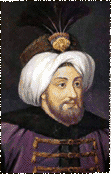Royal house House of Osman Name Mustafa II Children Mahmud I, Osman III | Role Sultan Siblings Ahmed III | |
 | ||
Reign February 6, 1695 – December 8, 1703 Consorts Saliha SultanSehsuvar SultanAlicenab KadinefendiHafise KadinefendiIvaz KadinefendiAfife KadinefendiBahtiyar KadinefendiHanife HanimefendiFatma Sahin Hanimefendi Spouse Sehsuvar Sultan, Saliha Sultan Parents Emetullah Rabia Gulnus Sultan, Mehmed IV Similar People | ||
Sultan Mustafa II (Mustafa Sani) – 22nd Ruler of Ottoman Empire (Saltanat e Usmania) in Urdu & Hindi
Mustafa II (Ottoman Turkish: مصطفى ثانى Mustafa-yi sani) (February 6, 1664 – December 29/30, 1703) was the Sultan of the Ottoman Empire from 1695 to 1703.
Contents
- Sultan Mustafa II Mustafa Sani 22nd Ruler of Ottoman Empire Saltanat e Usmania in Urdu Hindi
- Who is sultan mustafa ii ghazi
- Biography
- Military Campaigns
- Personal life
- References
Who is sultan mustafa ii ghazi
Biography
He was born at Edirne Palace a son of sultan Mehmed IV (1648–87) and Valide Sultan Mah-Para Ummatullah Rabia Gul-Nush, originally named Evemia, who was of Greek Cretan descent. Mustafa II abdicated in favor of his brother Ahmed III (1703–30) in 1703.
Military Campaigns
During his reign the Great Turkish War, which had started in 1683, was still going on. After the failure of the second Siege of Vienna (1683) the Holy League had captured large parts of the Empire's territory in Europe. The Habsburg armies came as far as Nis, modern-day Serbia. Sultan Mustafa II was determined to recapture the lost territories and therefore he personally commanded his armies. First, the Ottoman navy recaptured the island of Chios after defeating the Venetian Fleet twice, in the Battle of the Oinousses Islands (1695) and in the Battle of Chios (1695), in February 1695.
In June 1695, Mustafa II left Edirne for his first military campaign against the Habsburg Empire. By September 1695 the town of Lipova was captured. On 18 September 1695 after the Naval Victory of Zeytinburnu the Venetian Navy was destroyed. A few days later the Habsburg army was defeated in the Battle of Lugos. Afterwards the Ottoman Army returned to the capital. Meanwhile the Ottoman fortress in Azov was successfully defended against the besieging Russian forces.
On April 1696 Mustafa II left Edirne for his second military campaign against the Habsburg Empire. In August 1696 the Russians besieged Azov for the second time and captured the fortress. In August 1696 the Ottoman troops defeated the Habsburg army in the Battle of Ulas and in the Battle of Cenei. After these victories the Ottoman troops captured Timisoara and Koca Cafer Pasha was appointed as the protector of Belgrade. Afterwards the army returned to the Ottoman capital.
In June 1697 Mustafa II left the capital on his third military campaign against the Habsburg Empire. However, the Ottoman Army suffered a defeat in the Battle of Zenta and Grand Vizier Elmas Mehmed Pasha died in the battle. Afterwards the Ottomans signed a treaty with the Holy League.
The most traumatic event of his reign was the loss of Hungary by the Treaty of Karlowitz in 1699. This event marked the beginning of the long decline of the Ottoman Empire.
Yet even if Ottoman power seemed to wane on one side of the empire, this did not mean that Ottoman efforts at expansion ceased. In 1700, for example, the Grand Vizier Amcazade Huseyin boasted to a recalcitrant tribe residing in swamps near Baghdad that they ought to abide by the sultan's rule, since his grasp extended even to their marshy redoubts. The Grand Vizier added that, after all, Mustafa was "the Lord of Water and Mud."
At the end of his reign, Mustafa II sought to restore power to the Sultanate, which had been an increasingly symbolic position since the middle of the 17th century, when Mehmed IV had signed over his executive powers to the Grand Vizier. Mustafa II's strategy was to create an alternative base of power for himself by making the position of timars, the Ottoman cavalrymen, hereditary and thus loyal to him. The timars, however, were at this point increasingly an obsolete part of the Ottoman military machine.
The strategem (called the "Edirne event" by historians) failed, and Mustafa II was deposed in the same year, 1703. He died at Topkapi Palace, Constantinople.
Personal life
Mustafa II had many wives. Two of them were Valide Sultan Saliha Sabkati, mother of Mahmud I, and Valide Sultan Sehsuvar, mother of Osman III.
